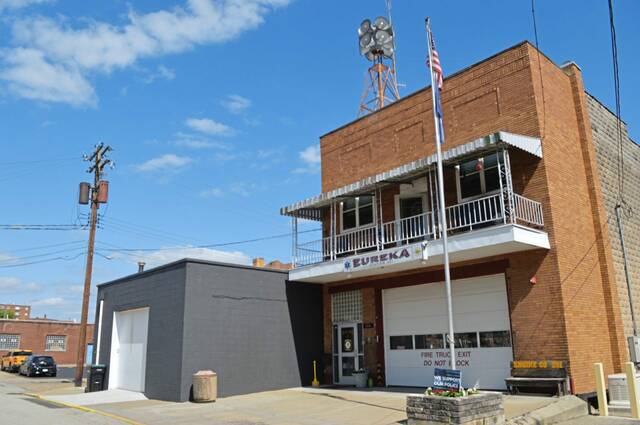Brackenridge, Tarentum, others consider forming ambulance authority to prevent Eureka Ambulance closure
Contributions to local emergency medical services could become mandatory in the form of fees or taxes if a plan to create a new authority to oversee EMS is adopted.
But exactly who would pay those in Tarentum, Brackenridge, Fawn, Frazer and East Deer remains to be seen.
Brackenridge wants to explore the creation of an emergency medical services authority with neighboring municipalities to avert the possible closure of Eureka Community Ambulance Service in coming months.
The move, if approved, would take the financial burden off Eureka and distribute it across participating communities. Currently, Eureka serves 12,000 people in the five communities it covers.
Brackenridge Council approved, by a 4-1 vote with John Stanzione absent, a resolution to form a committee to determine the feasibility.
“This should be a countywide effort,” said Councilman Verne Petz in casting the only dissenting vote. “Here we go again — they are forcing the municipalities to pick up and pay for what the insurance companies won’t.”
Officials at Tarentum-based Eureka announced in May that the company, a mainstay for 88 years, likely would close or significantly curtail operations by the year’s end if financial struggles remain unchanged.
Its challenges are similar to other EMS agencies across the state that face dismal insurance reimbursements, decreased donations and low volunteerism.
Tarentum Manager Dwight Boddorf said borough council is expected to discuss the issue during its meeting Tuesday.
If approved, the ambulance authority could be structured as a tax- or fee-based organization. Funding and staffing would be up to the authority board, not the municipalities, Boddorf said.
“This authority would distribute the costs of EMS services fairly among all municipalities served by Eureka, similar to the model used for the sewer authority,” Boddorf said. “By forming an ambulance authority, we aim to ensure that all communities share the responsibility of funding essential EMS services, providing a sustainable and equitable solution for the future.”
Anxiety about the viability of EMS units in the Alle-Kiski Valley has been growing as companies struggle to operate.
That concern was evident at an April meeting of EMS and municipal officials with state Rep. Mandy Steele, D-Fox Chapel, whose district includes Tarentum and Brackenridge, and Ken Hellendall, an EMS consultant for the state Department of Community and Economic Development.
The EMS officials said only a fraction of residents of their communities purchase memberships through their annual fund drives. That, combined with rising costs and inadequate reimbursements by insurance companies for ambulance trips, is making it tougher and tougher to stay in business, they said.
Eureka Chief Brad James said the most successful membership/fund drive the company ever had was 10 years ago, when 38% of the households in its service area participated.
From residents of the five communities, Eureka receives about $41,000 in donations. Its budget is $110,000 — not including payroll for its 14 staff members.
He said, without a designated funding stream, there is no way for EMS to survive.
“Donations are either inconsistent, insufficient or not there at all,” James said.
Staffing, too, is a problem. The pool of employees is shrinking because of wages and job demands.
“You can make the same amount of money at McDonald’s and have less stress,” he said. “I can’t expect people not to consider that.”
The average EMT pay rate is less than $37,000 per year, according to salary.com.
“However, the bottom line is funding. EMS has been handling its own (funding) for a long time while it should’ve been funded. When you call, we’re there for you, but the government needs to fund us like we need.”
One of the options Hellendall mentioned during that April meeting was the formation of an authority to govern the EMS services under one umbrella and taking it out of municipal bodies’ hands.
“Authorities can bill,” he said. “Authorities can do such things as management.”
Hellendall said an authority can mandate fees for service and enforce their collection.
Providing EMS services is the responsibility of each municipality, but it can be done through an authority, he said.
Brackenridge Mayor Lindsay Fraser and council President Tim Connelly also said the state has to get involved to create a long-term solution.
“There has to be a consequence for insurance companies not paying,” Connelly said. “It’s just horrible.”
Ambulance providers say insurance companies reimburse them for only 30% to 60% of their costs for treating and transporting patients. When advanced life support is required, those percentages can shrink significantly, providers say.
Remove the ads from your TribLIVE reading experience but still support the journalists who create the content with TribLIVE Ad-Free.


